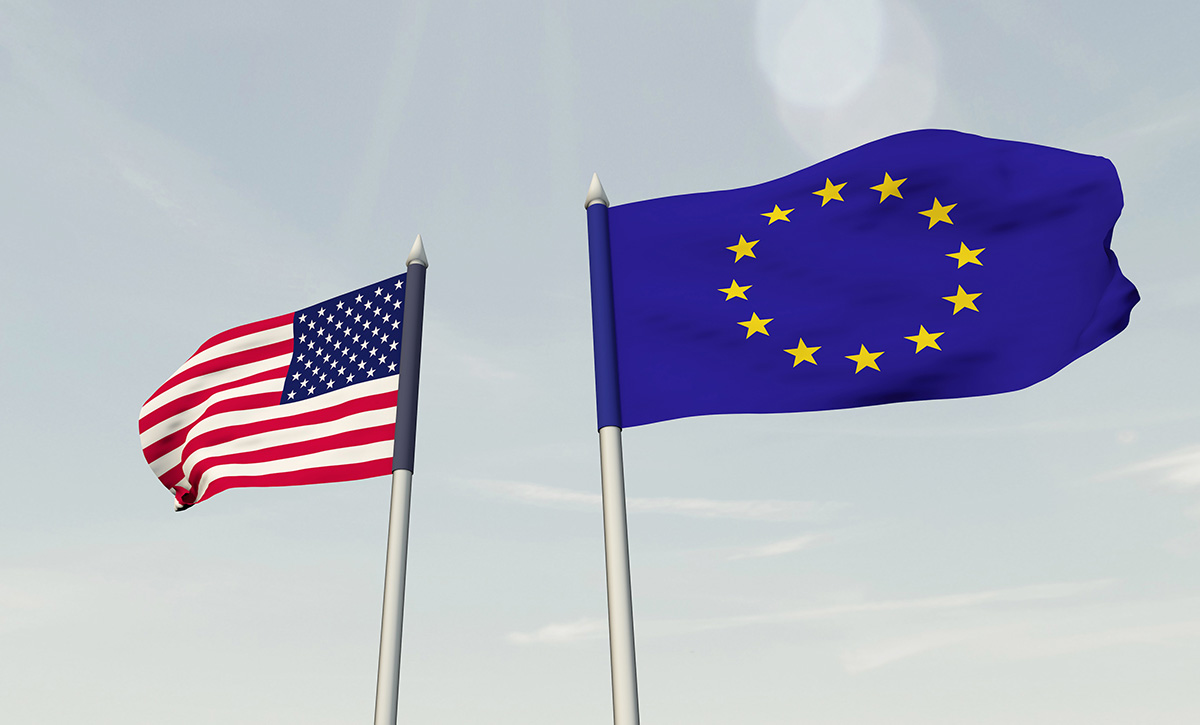
Following roughly 18 months of prices rising at unprecedented rates, inflation remains stubbornly high in both the United States and the Eurozone. The U.S. Federal Reserve and the European Central Bank (ECB) have sought to aggressively increase interest rates in order to tighten the global money supply and bring prices under control.
These moves started to have an effect on inflation in the United States by mid-summer, although consumers' economic outlook was generally pessimistic. In July, following the Federal Reserve's decision to raise rates by 75 basis points (bps), the consumer price index experienced its first month of negative growth since May 2020. For consumers, this marked the first time in 26 months that goods, in general, did not cost more than they had the month before.
Recommended For You
Since July, the Fed has undertaken additional ambitious interest rate hikes, which have had a small impact on inflation while introducing significant challenges for the U.S. economy. Thus far in 2022, the Fed has increased rates by 300 bps, with the target federal funds rate now between 3.00 percent and 3.25 percent. These hikes have been historically aggressive—rather than raising rates using its "typical" 25 bps jumps, the increases in June, July, and September were all 75 bps. Following disappointing inflation figures in September, we expect another 75 bps hike at the Fed's November meeting and at least 50 bps in December.
Despite harsh criticisms from various observers, the Fed appears poised to achieve its overall goal and restore credibility in targeting inflation. The inflation rate has continued to ease—from 9.1 percent, its highest level in more than 40 years, to 8.2 percent in September. But consumer inflation expectations have started to increase, which ramps up the pressure on monetary policymakers to act even more aggressively.
We expect these actions to be sufficient to continue to rein in inflation, bringing it down to 4.4 percent in 2023, compared with the 8.0 percent average inflation rate in 2022. But this will come at a cost.
The Path to a Soft Landing Has Narrowed
The Federal Reserve is responsible for balancing several distinct monetary goals, wherein the pursuit of one goal may inhibit or contradict the pursuit of another. A few months ago, the Fed clearly needed to take drastic action to get inflation under control by any means possible. The Fed announced its plan to raise interest rates and has carried out that plan.
However, the September inflation figures suggest that the path forward is getting both clearer and more painful. Continuing to raise interest rates will continue to moderate inflation, but it is also likely to trigger a global recession. In the United States, gross domestic product (GDP) growth was negative in both the first and second quarters of 2022, which is what people consider to be the "technical" or "traditional" definition of a recession. However, due to the extremely tight labor market, the question of whether we are truly in a recession is not that cut-and-dried.
As the global economy continues its gradual trek back toward normalcy, the Fed hopes to ensure as soft a landing as possible, although bumps are looking unavoidable. Fed officials are willing to accept the slowdown of certain industries and asset classes, but they want to avoid a much harsher, and broader, economic crash.
Navigating Uncertain Markets in Europe
Recent inflation has undoubtedly created problems within the United States, but its impact has been even larger in other parts of the world, including the entire Eurozone. Prior to the ECB's decision to raise interest rates, annualized inflation figures hovered above 9 percent there. In some countries, including the normally economically stable Netherlands, inflation rates were north of 11 percent prior to ECB rate hikes, and are now even higher.
The primary driver of inflation in the Eurozone has been the incredible spike in fuel prices resulting from Russia's war on Ukraine. According to a recent report from Atradius, the Eurozone's energy component of inflation skyrocketed: It has risen by more than 60 percent since 2020.
The ECB expects inflation rates to decrease somewhat over the next year, but a recent press release indicates that it expects inflation to remain above target for an extended period.
See also:
- Resilience in the Face of Geopolitical Threats
- A CFO's Recession Survival Guide
- Is a 'Soft Landing' Plausible at This Point?
- Planning Liquidity in Times of Uncertainty
Russia plays an incredibly significant role in the European energy market. As long as the Russia-Ukraine war continues, energy markets will remain unstable. Russia is one of the region's largest suppliers of natural gas, petroleum, and other vital resources, especially for countries in the eastern part of the European Union.
And thus far, the conflict seems unlikely to fully end before winter, when the use of natural gas energy is at its peak. Nevertheless, both the World Bank and the Organisation for Economic Co-operation and Development (OECD) predict that energy and food prices will gradually stabilize over the next year, helping to contain the current high inflation rate.
The One Constant: Uncertainty
Right now, the United States and the European Union are exhibiting many of the same economic trends. That is to be expected in an increasingly global economy. Both regions are experiencing high levels of inflation, which their governments are trying to combat with higher interest rates. Both regions will also likely experience a gradual decline in inflation rates.
But if there's anything certain in this fast-changing economic climate, it's that uncertainty still abounds.
 Dana Bodnar is an economist at Atradius, where she is responsible for macroeconomic and country risk analysis specializing in North America.
Dana Bodnar is an economist at Atradius, where she is responsible for macroeconomic and country risk analysis specializing in North America.
© 2025 ALM Global, LLC, All Rights Reserved. Request academic re-use from www.copyright.com. All other uses, submit a request to [email protected]. For more information visit Asset & Logo Licensing.




